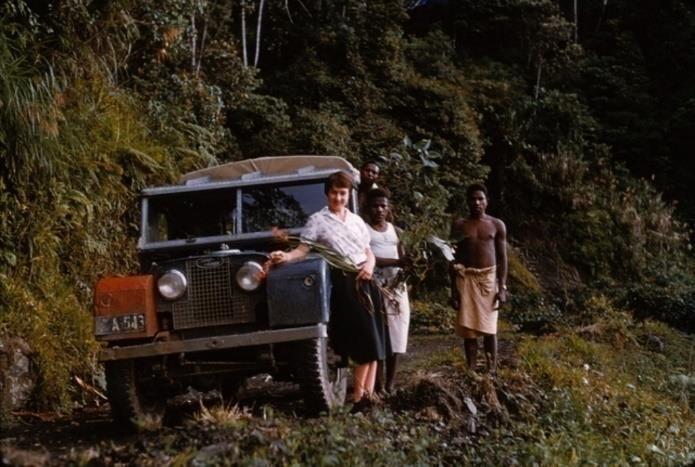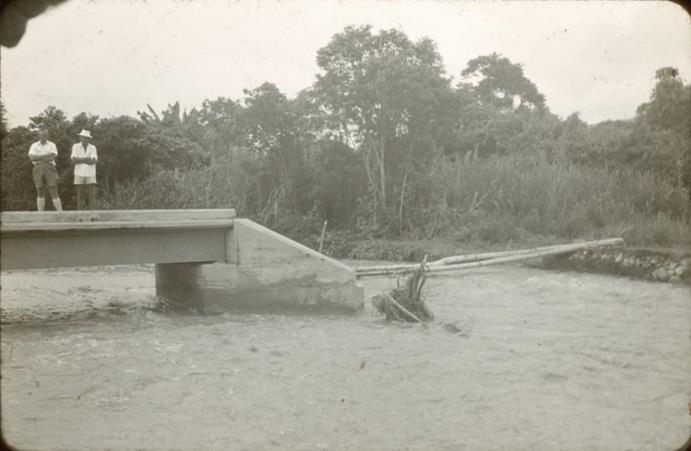
1 minute read
The Forestry Labour Force
In 1960 supervision of Wau forestry was passed to Des Harries.
On Edie Creek Road. June Harries and friends botanising, 1960. Photo Credit
Advertisement
Des Harries.
In 1960 the Kauli base was abandoned, and a permanent Forest Station established on the Northern side of the Bulolo River. This was to be accessed via the Pine Creek Road, and a new concrete bridge was constructed crossing the Bulolo River. However, before the bridge could be used, floods washed out the temporary road approaches. For several months access was limited to vehicles capable of fording the river or by walking.
Flood damage at new Bulolo River Bridge site, 1960. Photo Credit Des Harries.

The Forestry Labour Force
In the post-war period the workforce at Wau was provided almost solely through the system of indentured labour organized by the Administration. The source of this labour force was the Eastern Highlands, commonly from Kainantu.
The so-called ‘lines’ of thirty young men were recruited for two-year periods. Usually they selected their own ‘boss boi,’ who thereby gave his name to the ‘line.’ Working at Wau was probably the best locality for highlanders in terms of healthiness. The risk of serious lowland tropical disease was less than at coastal locations although malaria was still a major problem. In terms of working conditions, with regular diet, housing, and clothing issues as well as health care, very few recruits did not return to their village in a healthier state than when they had left. Many wanted to return, although this rarely happened.







